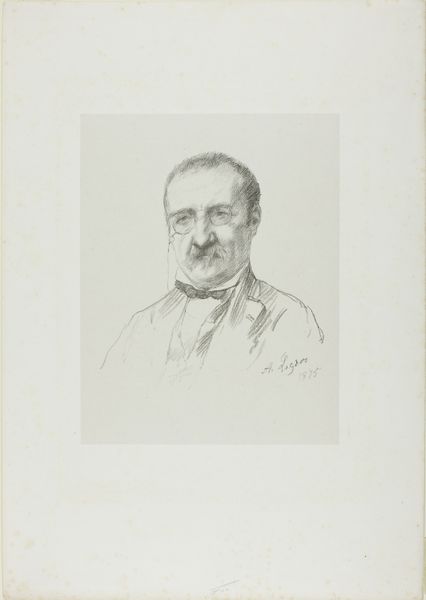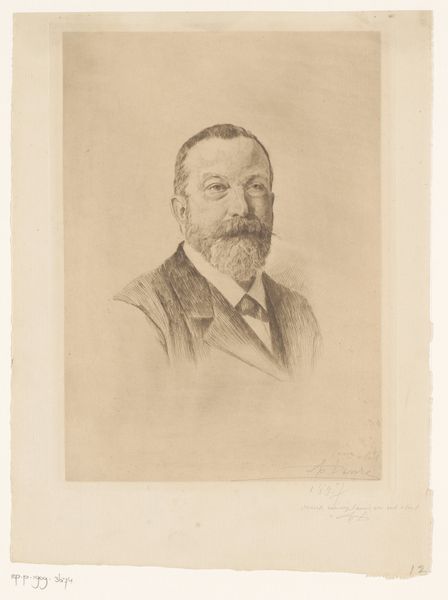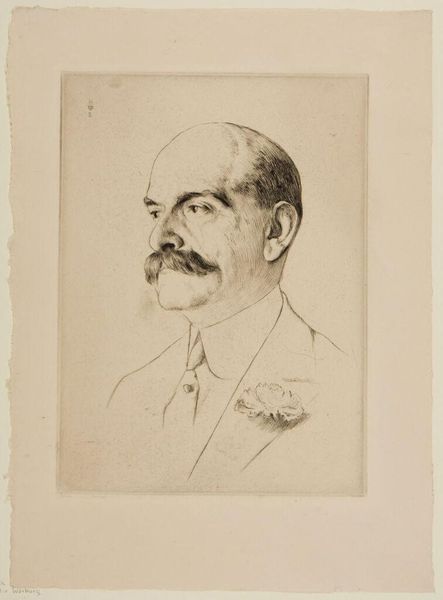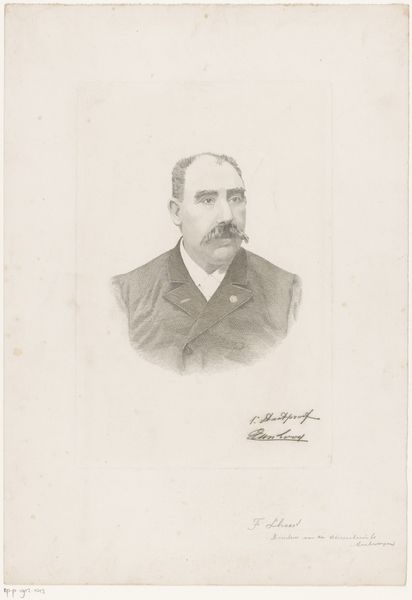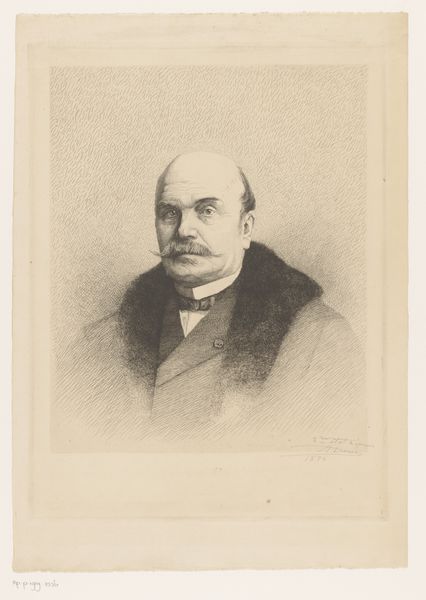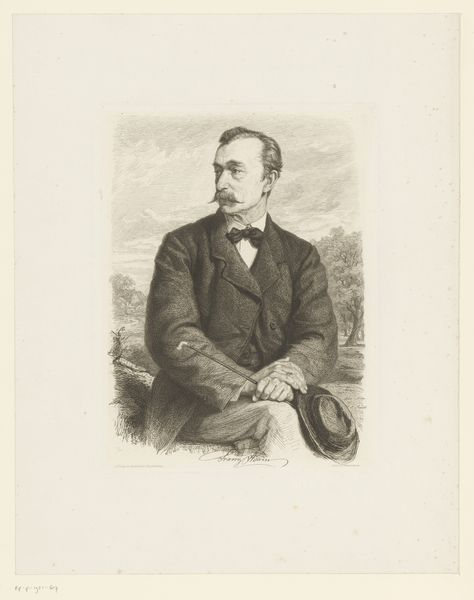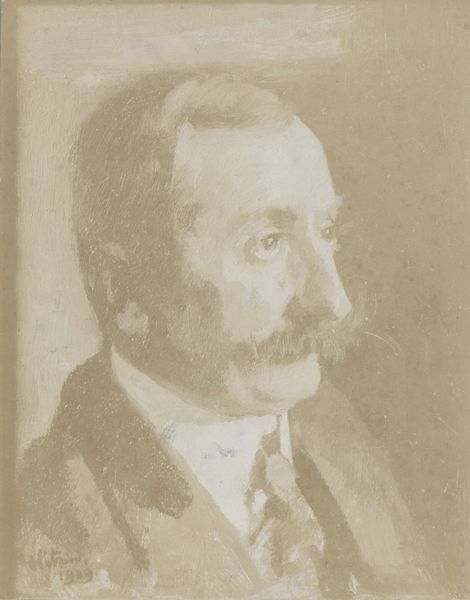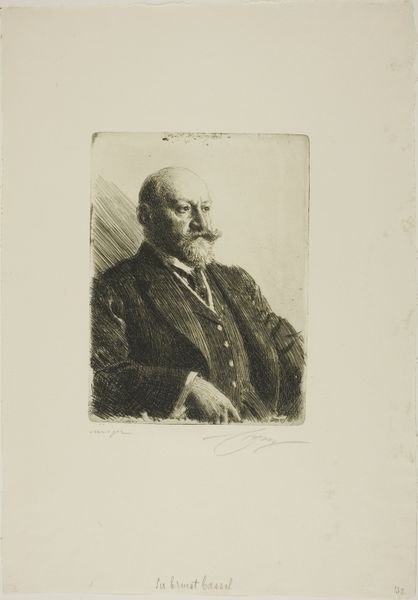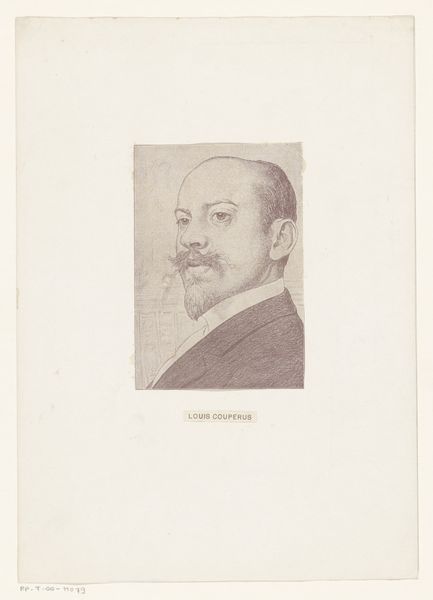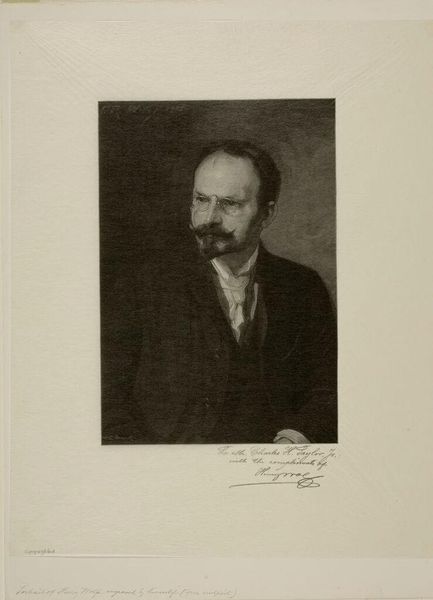
Dimensions: height 363 mm, width 280 mm
Copyright: Rijks Museum: Open Domain
Auguste Danse created this portrait of an unknown man, Monsieur Laporte, using etching in 1882. Etching is an printmaking process that relies on corrosive materials, like acid, to create a design in a metal plate. The plate is covered with a waxy, acid-resistant substance, into which the artist scratches an image. When the plate is dipped in acid, the exposed lines are eaten away, creating grooves. Think of the etcher as a kind of proto-industrial worker. The repetitive, mechanical work of hatching lines to build up tone, as we see in the subject’s coat and face, is laborious. As with any print, the image is not “original” in the traditional sense. It is conceived to be reproduced, shared, disseminated. The beauty of etching lies in its ability to capture fine detail and subtle tonal variations. By controlling the depth and density of the etched lines, Danse achieved a remarkable likeness of his sitter, inviting us to reflect on the material and social conditions that shaped its creation.
Comments
No comments
Be the first to comment and join the conversation on the ultimate creative platform.

